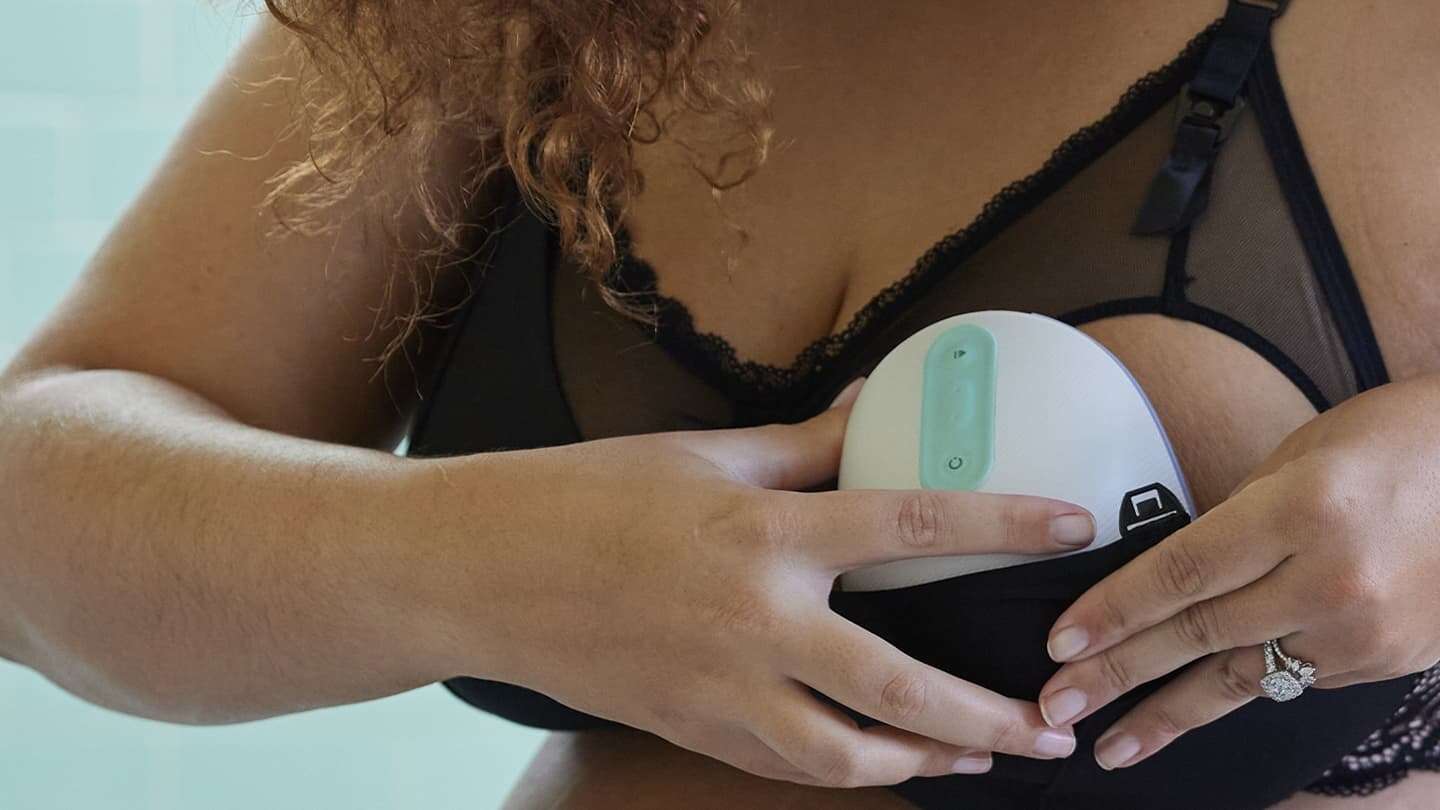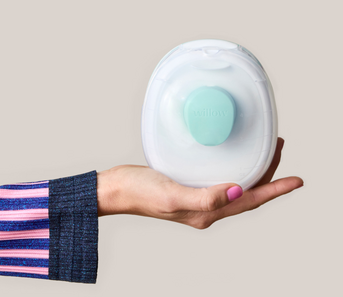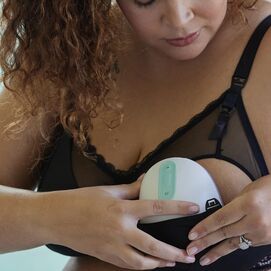Are you worried you’re not producing enough milk to keep your baby full and happy? If so, you might be frantically searching the web for tips on how to boost your milk supply. Don’t fret, mama. There are plenty of things you can do, including power pumping to increase your milk supply.
What is power pumping? Does it even work? Is it as much work as it sounds like it will be? Here, we answer these questions about power pumping and then some.
What Is Power Pumping?
While it may sound like cardio, it’s far from it. Power pumping involves pumping your breast milk in several short sessions, almost one after the other. For example, instead of pumping every few hours, you would pump several times in a single hour or two, once per day.
If you and your baby have been on this journey for a few months, you may remember the early days of breastfeeding. As a newborn, your baby may have wanted to eat in short spurts or clusters. Cluster feeding as it’s called is normal and often happens when your baby is going through a growth spurt.
Power pumping simulates this type of feeding. And as a result, many moms experience an increase in milk supply.
Does Power Pumping Breast Milk Really Work?
The strategy behind power pumping is really quite simple. The more milk you pump, the more milk you’ll produce. That’s the beauty of breastfeeding. Your body will follow your baby’s feeding cues to ensure you’re making enough milk to keep them fed. So, simply increasing how much you pump may increase your supply.
While there’s a lack of medical studies completed on power pumping and its effectiveness, a quick Google search will return articles, blog posts and more from mamas who have had great success with the method.
Is Power Pumping Necessary?
Power pumping is a safe and often effective way to boost breast milk supply. And it’s often a necessary method to try if you’re struggling with low supply. There are other reasons you might try power pumping too.
For example, you may want to get a jumpstart on a freezer stash before you go back to work. Or, you may wish to maintain your breast milk supply although your baby is refusing to nurse (called nursing strikes, these moments are normal, mom).
Mamas who make more than enough milk for their babies should avoid power pumping. Too much breast milk, also known as hyperlactation, can lead to sore breasts, severe engorgement and painful breastfeeding. It can also result in your baby struggling to breastfeed as your flow may be too strong.
Power Pumping Schedules
Ready to try power pumping? First things first, you’ll need to find a power pumping schedule that works for you. There are various schedules to choose from, depending on your lifestyle.
First, determine when your breast milk output is the highest. Some moms notice their output is higher in the mornings. However, no two moms are the same. Power pumping when your output is high may help you pump a bit more milk than you would at other times.
You’ll want to try to power pump right after a breastfeeding session with your baby. This can help ensure you have enough milk for your baby at their next feed. If you exclusively pump, trade one of your typical sessions for a power pumping session.
According to Wendy Wright, our Board Certified Lactation Consultant, a good schedule to try is power pumping every 15 minutes for 15 minutes in a one or two-hour period, once a day.
Or, you can try pumping for 10 minutes and resting for 10 minutes, following this cycle until an hour has passed. Once you get the hang of power pumping, you’ll discover what works best for you and your baby.
Wondering what a power pumping schedule might look like for you and your baby? Here’s a sample schedule you can try:
7:00 a.m.: Nurse your baby or complete your first pumping session of the day.
8:00 a.m. to 8:10 a.m.: Power pump.
8:10 a.m. to 8:20 a.m.: Rest.
8:20 a.m. to 8:30 a.m.: Power pump.
8:30 a.m. to 8:40 a.m.: Rest.
8:40 a.m. to 8:50 a.m.: Power pump.
8:50 a.m. to 9:00 a.m.: Rest.
Of course, you can always start earlier in the day or later, depending on when your first feeding session falls.
How Much Milk Do You Get After Power Pumping?
Many moms notice an increase in breast milk output after power pumping. However, no two moms are the same. The amount of milk you get after power pumping will be unique to you and your body.
If you want to see how power pumping affects your output, take notice of how many ounces you end up with after a normal pumping session. Then, take a look at your output after a power pumping session. See an increase? Yay! Don’t see an increase? Keep it up—it could take a bit of time for your body to adjust.
Do You Have to Power Pump at the Same Time Each Day?
Nope! Wherever you can fit a power pumping session into your schedule is best. Some moms may choose to power pump at the same time simply for the sake of routine. Others make it a point to power pump whenever they have a free hour in the day. You do you, mama.
Willow 360™ Wearable Breast Pump
Willow 360™ Wearable Breast Pump
Willow 360 is designed with a zero-gravity latch to give you 360° of leak-proof mobility. It's the hands-free breast pump that changed the game.
Willow Go™ Wearable Breast Pump
Willow Go™ Wearable Breast Pump
With hospital-grade suction and a 100% comfort rating, Willow Go pumps quietly and discreetly (no dangling tubes, bottles, or external motors) so you can do it all.
Other Tips for Increasing Milk Supply
Not sure if power pumping is right for you? There are plenty of other methods you can try to boost your milk supply:
Make sure you have a good latch: A good latch enables your baby to properly breastfeed and receive enough milk. As a result, your body knows how much milk to make. Your baby’s mouth should open wide around your areola, not just the nipple. And if you feel any pain, try again.
Pump between breastfeeding sessions: If power pumping isn’t for you, simply try adding a pumping session in between your breastfeeding sessions.
Drink plenty of water: It’s true that the amount of liquid you put into your body affects the amount of milk you’re able to make. So, hydrate, hydrate, hydrate, mom.
Make sure your baby drains your breast: If your baby drains your breast after each feed, your breast will signal your body to make more milk. When your breasts feel lighter or even empty, your baby has succeeded. This can take anywhere from 20 to 30 minutes.
If you’re at all concerned about your breast milk supply and nothing you do seems to be working, reach out for support. Call your OB/GYN or your baby’s pediatrician. Or, reach out to a lactation consultant. To start your search, try the IBCLC directory.
Simplify Your Power Pumping Routine With Willow
You’re busy, especially with a new baby to cuddle. Luckily, the Willow wearable breast pump makes it easy to pump while you snuggle. Learn more about Willow by visiting our blog or shop for your own Willow pump today.
Get pumping support with Simplifed
Get pumping support with Simplifed
Get access to free virtual feeding support from the lactation consultants at Simplifed. They can help you navigate supply issues, introduce a bottle, and more, and are trained on Willow pumps.
















